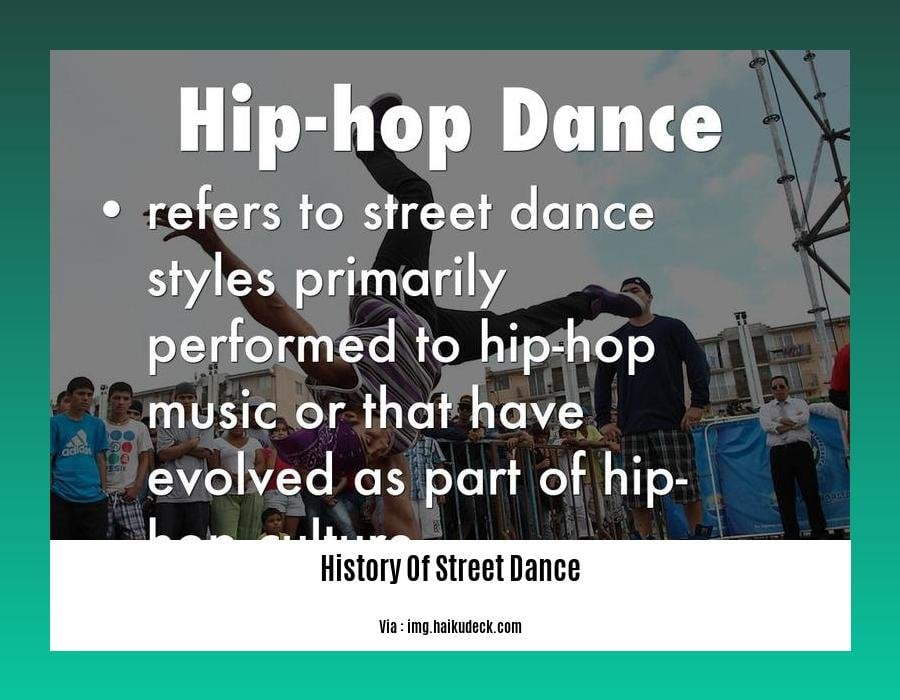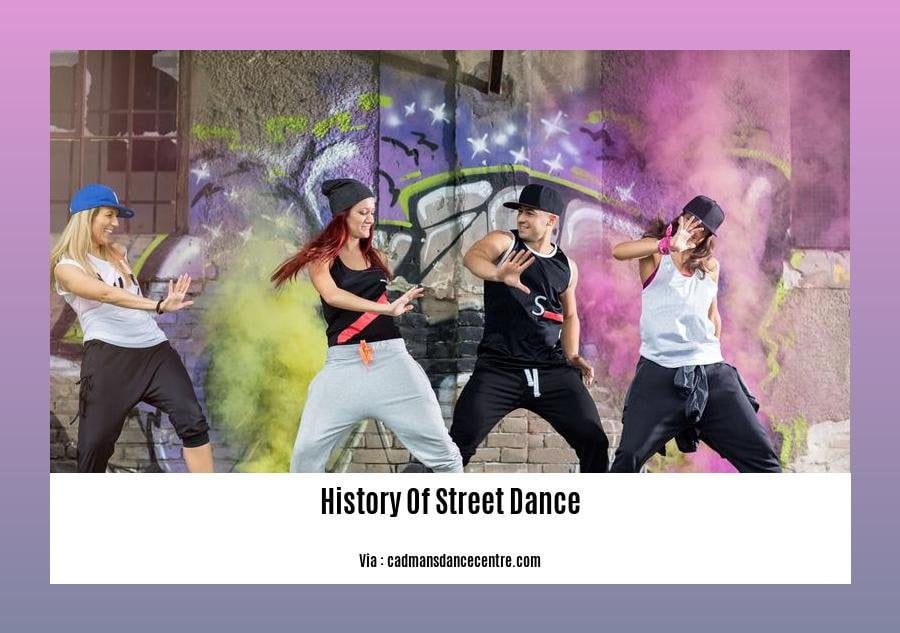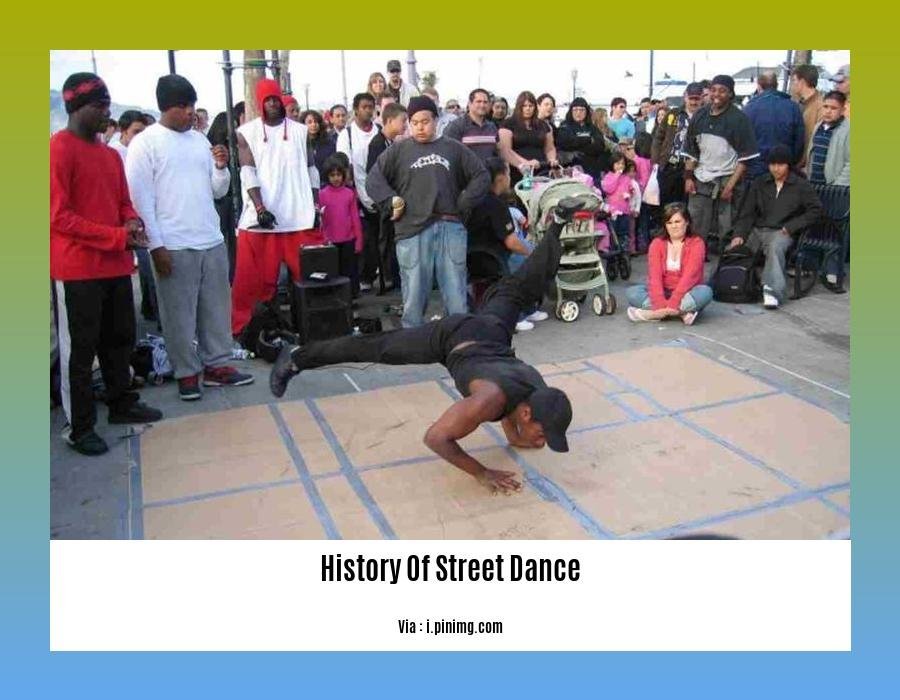Step into the vibrant world of street dance, where passion, rhythm, and creativity intertwine to create an electrifying spectacle. From the bustling streets of New York to the vibrant favelas of Rio, street dance has left an indelible mark on global culture, shaping identities and uniting communities. Join us on a captivating journey through the history of street dance, exploring its dynamic evolution, diverse styles, and profound impact on society. Discover how street dance transcended its humble beginnings to become an art form celebrated on stages worldwide.
Key Takeaways:
- Street dance originated in the 1970s in America as a fusion of popular culture and social dance.
- It evolved from older vernacular dance forms like tap, clogging, and zapateo.
- African American vernacular styles like jazz and tap were foundational elements, later blended with Latin American styles to create hip-hop.
- Street dance was improvised in informal spaces, not learned in a formal studio setting.
- Gained mainstream popularity in the 1980s with the rise of hip-hop music and culture.
History of Street Dance: An Evolution of Rhythmic Expression

Street dance, a vibrant and captivating dance form, has taken the world by storm. With its roots in the 1970s, street dance emerged as a fusion of popular culture, social dance, and the desire for self-expression.
Born from the streets, this dance style wasn’t confined by studio walls but thrived in the energy and spontaneity of urban spaces. In the beginning, street dance was all about improvisation – a way for people to express themselves without the constraints of formal dance training.
As the 1980s rolled in, street dance gained unprecedented mainstream popularity, riding the wave of hip-hop culture and music. The electrifying beats of hip-hop provided the perfect backdrop for street dancers to showcase their incredible moves, captivating audiences with their raw energy and innovative choreography.
Over the decades, street dance has evolved and embraced various styles, each with its own unique flavor and influences. From the dynamic popping and locking of funk to the fluid and expressive moves of house, street dance has become a melting pot of cultures, creativity, and innovation.
On the global stage, street dance has left an undeniable mark. From the bustling streets of New York City to the vibrant favelas of Rio de Janeiro, street dancers have taken their craft to every corner of the world, breaking down barriers and uniting people through the universal language of dance.
Today, street dance continues to flourish, inspiring and empowering a new generation of dancers. It’s not just a dance style but a cultural phenomenon, a testament to the power of self-expression and the resilience of the human spirit.
So, the next time you see a street dancer lost in the rhythm, know that you’re witnessing the embodiment of history in motion – a testament to the ever-evolving saga of street dance.
Dive into the enriching history of streetwear and uncover its humble beginnings as a rebellious counterculture to its current status as a global fashion phenomenon that continues to challenge societal norms.
From its origins in ancient Sufi rituals, history of Sufi Music to its global prominence today, explore the compelling journey of this genre, and discover how it has inspired generations with its spiritual depth and emotional resonance.
Trace the history of sugar’s timeline from its ancient origins as a luxury item to its transformation into a global commodity that shaped world history and continues to impact our lives today.
Street Dance Today: A Mosaic of Culture and Creativity

In the dynamic world of dance, street dance stands out as a captivating fusion of rhythm, expression, and cultural diversity. Originating in the vibrant streets of America during the 1970s, this energetic art form has evolved into a mosaic of creativity, influenced by cultures from every corner of the globe.
Street dance draws its essence from the fusion of funk, soul, hip-hop, and traditional African dance forms. These diverse influences have given rise to an array of styles, each embodying a unique flavor and energy. Breaking, with its gravity-defying moves and intricate footwork, emerged in the Bronx, New York, showcasing the resilience and creativity of its urban communities. Popping and locking, characterized by sharp, robotic movements and isolations, originated in California, reflecting the laid-back vibes of the Golden State.
The 1980s witnessed the global rise of street dance, thanks to the popularity of hip-hop music and culture. Films like “Wild Style” and “Breakdance” captivated audiences worldwide, propelling street dance into the mainstream spotlight. This newfound recognition fueled the growth and evolution of the art form, leading to the emergence of new styles and the formation of dance crews and competitions.
Today, street dance has become a global phenomenon, transcending national borders and uniting people from all walks of life. It is celebrated in dance battles, workshops, and festivals worldwide, showcasing the incredible talent and creativity of street dancers. Street dance today is not just a dance style but a vibrant community, a melting pot of cultures, and a powerful force for self-expression and creativity.
Key Takeaways:
- Street dance originated in America in the 1970s, influenced by funk, soul, hip-hop, and traditional African dance forms.
- It gained worldwide fame in the 1980s through hip-hop culture and films like “Wild Style” and “Breakdance.”
- Street dance encompasses various styles, including breaking, popping, locking, and many more, each reflecting unique cultural influences.
- Today, street dance is a global phenomenon celebrated in dance battles, workshops, and festivals worldwide.
- It fosters a vibrant community, unites people from diverse cultures, and provides a platform for self-expression and creativity.
Sources:
– History of Street Dance
– Street Dance Styles
The Roots of Street Dance: From Streets to Studios
Street dance, a vibrant and energetic form of dance, has its roots in the vibrant streets of America in the 1970s. It emerged as a fusion of popular culture, social expression, and the irresistible rhythms of funk, soul, and hip-hop. Initially confined to informal gatherings and street corners, this captivating dance form gradually gained global recognition and evolved into a diverse spectrum of styles.
Key Takeaways:
Urban Origins: Street dance originated in the 1970s in America, fueled by the energy of urban youth and the infectious rhythms of funk, soul, and hip-hop.
Social Expression: It served as a medium for self-expression and community building, allowing individuals to showcase their creativity and connect with like-minded enthusiasts.
Diverse Styles: Street dance encompasses a wide range of styles, with some of the most notable including breaking, popping, locking, house, and waacking.
Global Phenomenon: From its humble beginnings on the streets, street dance has blossomed into a global phenomenon, celebrated through dance battles, workshops, and festivals worldwide.
Unity and Creativity: It fosters a vibrant community, uniting people from diverse cultures and backgrounds through the shared passion for dance and creativity.
Roots and Evolution
The origins of street dance can be traced back to traditional African dance forms, which emphasized rhythm, improvisation, and community expression. These influences laid the foundation for the development of African American vernacular dance styles such as jazz, tap, and Lindy Hop, which paved the way for the emergence of street dance.
In the 1970s, the streets of New York City witnessed the birth of breaking, also known as b-boying or breakdancing. This dynamic style, characterized by intricate footwork, spins, and gravity-defying moves, quickly gained popularity and became a defining element of hip-hop culture.
On the West Coast, funk music fueled the rise of popping and locking, two styles that showcased isolations, robotic movements, and sharp angles. These styles, along with breaking, gained mainstream exposure through films like “Wild Style” and “Breakdance,” propelling street dance into the global spotlight.
Global Diaspora
The 1980s marked a period of rapid globalization for street dance. As hip-hop culture spread across borders, so did the infectious energy of street dance. Different countries infused their unique cultural influences into the dance, giving rise to a diverse array of styles.
In Brazil, street dance blended with the vibrant rhythms of Carnaval to create funk, a style characterized by energetic footwork, hip isolations, and expressive body movements.
In South Korea, street dance became an integral part of the K-Pop phenomenon. Inspired by hip-hop and traditional Korean dance, Korean street dancers developed a unique style that showcased intricate choreography, powerful moves, and a strong sense of musicality.
Contemporary Street Dance
Today, street dance continues to thrive as a global phenomenon, celebrated in dance battles, workshops, and festivals worldwide. It has become an essential part of popular culture, inspiring countless dancers, choreographers, and artists.
Street dance embodies the spirit of creativity, inclusivity, and self-expression. It provides a platform for individuals to showcase their unique talents, connect with others, and celebrate the joy of dance.
References:
Street Dance – Imperial Society of Teachers of Dancing
The History and Evolution of Street Dance
FAQ
Q1: How did street dance originate?
A1: Street dance emerged in the 1970s in the United States, evolving from popular culture and social dance.
Q2: What are some popular street dance styles?
A2: Common street dance styles include breaking, popping, locking, house, waacking, and voguing.
Q3: How did street dance gain international recognition?
A3: Street dance gained international fame in the 1980s through films like “Wild Style” and “Breakdance,” showcasing the dynamic moves and creativity of street dancers.
Q4: What are some cultural influences in street dance?
A4: Street dance is influenced by a diverse range of cultures, including funk, soul, hip-hop, samba, and traditional African dance forms.
Q5: How has street dance evolved over time?
A5: Street dance has continually evolved, with new styles emerging and older styles adapting to changing trends and influences. Today, street dance is a vibrant and diverse art form practiced worldwide.
- Discover Trasa Robertson Cobern’s Mentors: Shaping Her Hurst Campaign - July 9, 2025
- Discover People Influenced by Trasa Cobern: A Legacy of Service - July 9, 2025
- Discover Trasa Cobern’s Nonprofit Impact: A Deep Dive - July 7, 2025
















